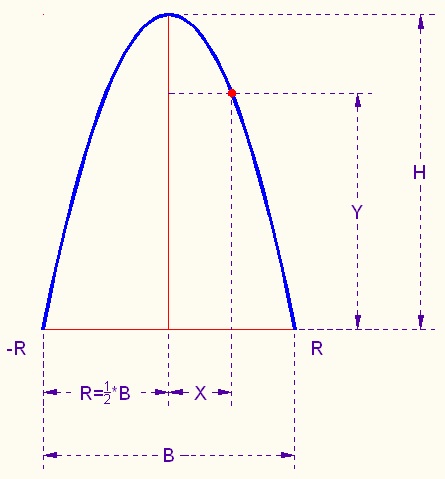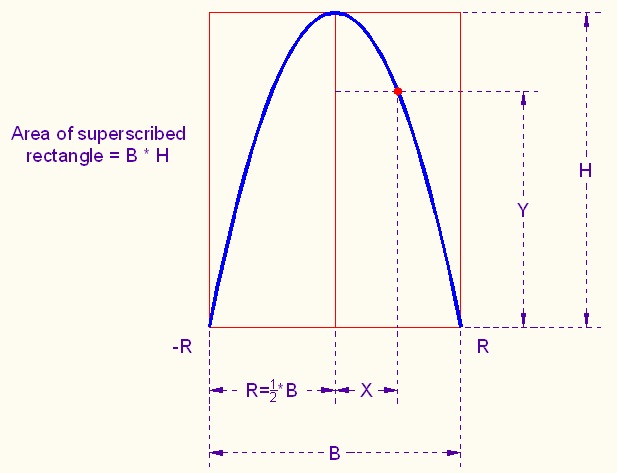

| H | height of the arch | ||||||
| B | its base | ||||||
| R = 1/2*B | one half of the base | ||||||
| X | variable changing from -R to R | ||||||
| Y | height of the arch above point X on its base |
| Y = H - (H/R2)*X2 |
| 0 = R2*a + Rb + H | (1) | |||
| 0 = R2*a - Rb + H | (2) |
| area | A = the integral of Y dX, for X changing from -R to R. | A = -R∫RY dX |
| B*H = 2*R*H |

| \Y1=H-(H/R2)X2 | height Y | |||
| \Y2=fnInt(Y1,X,-R,R) | area under the parabola |
| R | H | Y2 | B*H | |||||||||
| 1 | 2 | 2.6667 | 4.0000 | |||||||||
| 2 | 2 | 5.3333 | 8.0000 | |||||||||
| 1 | 3 | 4.0000 | 6.0000 | |||||||||
| 2 | 3 | 8.0000 | 12.0000 |